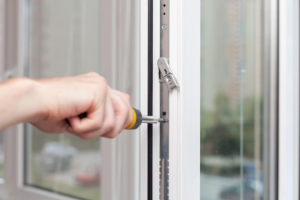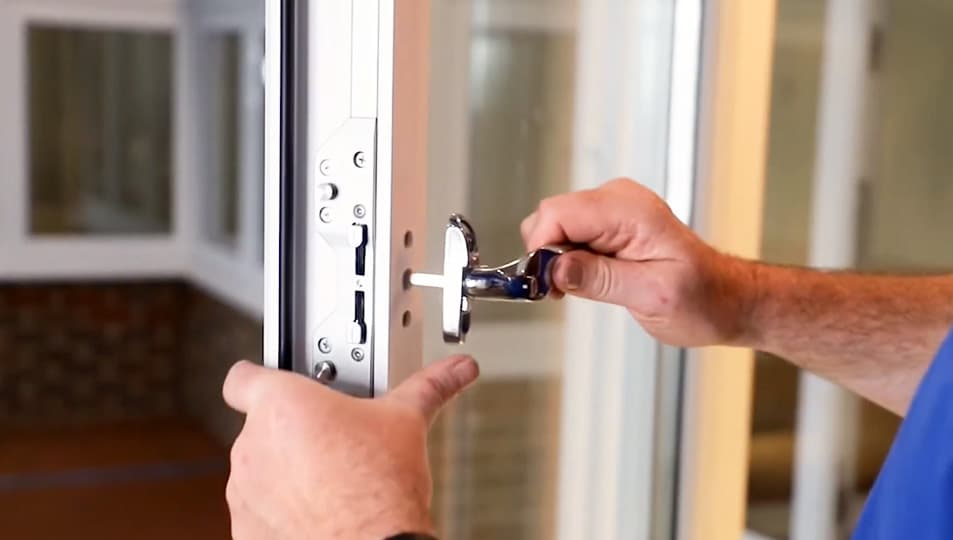20 Trailblazers Lead The Way In Lock Replacement
Dannielle
2024.12.13 17:21
305
0
본문
 Door Lock replacement locks for double glazed windows - What Are the Different Parts of a Door Lock?
Door Lock replacement locks for double glazed windows - What Are the Different Parts of a Door Lock? A broken door lock can make your home a target for burglars. Changing your lock is a cheap method to increase security without making your door inaccessible.
A broken door lock can make your home a target for burglars. Changing your lock is a cheap method to increase security without making your door inaccessible.Many locks come packaged with a cardboard template that you can wrap around the edge of your door to ensure that it is properly fitted. This will prevent you from purchasing the wrong lock.
The Cylinder
The cylinder is the main element of a door's mechanical lock. It houses a collection of spring-loaded pins that lock the door when no key is inserted into the hole. When keys are inserted into the doorknob, the uneven edge presses upwards on the pins inside of the cylinder, fitting them in their proper position. When the pins are in place, they allow the bolt (also called the latch) to move forward, connecting to the door's interior.
The bolt extends out of the cylinder and into the box, a hole is made in the door frame. The box is designed so that the bolt isn't able to be pulled out easily. The bolt is pulled back by a spring clip when the door closes. When you turn the handle, a spindle is engineered to rotate inside the cylinder. When it's done rotating the slanted side of the bolt is retracted into the door frame. The bolt is positioned in the carved-out portion of your doorframe, keeping the door closed until you have to open it again.
A faceplate is an inside metal plate that is attached to your door on either side of the hole for the deadbolt. Its purpose is to safeguard your Upvc Window Locking Mechanism Repair mechanism from damage that can result from the repeated removal and insertion of the knob. Are you installing a new upvc window lock repairs near me? Make sure that the faceplate is in alignment to the hole on the door frame. Also, make sure the faceplate is securely attached to the faceplate and the latch bore.
When replacing the lock on a door make sure that the deadbolt is correctly seated by sliding it in the opening of the strike plate. Once you're done, screw the strike plate and the core of the lock back into the hole. Don't over-tighten, as this can damage the latch or hinder it from fitting into its groove. It is a good idea to test the new lock by turning the key while it's in the locked position. If you find any issues, such as a noisy deadbolt or a loose latch It's best to replace the old lock with a new one.
The Faceplate
A faceplate is a flat plate that is attached to the headstock of a lathe in order to hold the workpiece. It has several screw holes through it where the screw thread enters through the back and then into the wood. A faceplate can support many different shapes, but in general they need to be placed, fixed and balanced that aren't simple tasks if compared to the simplicity of using a chuck.
A typical faceplate comes with a number mounting holes. In this case three holes are placed at 120 degrees intervals to accept the screws for mounting in FIGURE. 2. The screw holes are made through an interchangeable insert 16 or directly into the faceplate's body. An intermediate portion of the faceplate is a stepped section that provides an index mark to identify a specific place on the blank of the workpiece.
The stepping area is also abrasion resistant so that the fastener won't cause damage to the chisel that is used to cut into it. The surface of the body of the faceplate has distinct characteristics from the surrounding region and machining into this area alerts the turner to possible contact with a fastener, and gives the turner time to react.
Screws used to hold a faceplate in place should be of a size that can fit within the screw hole area with just a small amount of free play. When the screw is tightened to the block of glue, there must be no space behind it. This may allow the block during rotation to shift. It is also recommended to use a heavier gauge screw because it will seat more securely in the faceplate. The screw should also pass through the center of the screw hole to avoid the possibility of a screw head coming into contact with the workpiece.
The Strike Plate
The strike plate is a crucial part of your door lock. The strike plate stops the bolt from sliding when you shut the front door. The strike plate also helps to reinforce the lock and stops intruders breaking in using force against the latch and jamb.
A strike plate is a large metal plate that is inserted into the doorjamb (the vertical part of the frame) with a hole for the latch or deadbolt to be able to pass through. When the cylinder is turned the bolt shoots out of the strike plate and into the doorjamb, and it stays closed.
There are a variety of strike plates depending on the requirements of your. If you require a strikeplate to fit your lock, the information will list the type of strikeplate you need. However, the majority of strike plates are identical and will work with most standard latches and locks.
Standard strike plates are usually equipped with ovular screws and a "C"-shaped piece that acts as washer. They are usually used on doors with rounded corners. They come in a variety of sizes to match your door.
For additional security, you can opt for strike plates with no lip and is designed specifically for deadbolts. This is an excellent choice in areas where security needs to be quickly achieved like stairs. This is a great option for those who want to secure documents or equipment in your home.
Another way to upgrade the security of your door is by installing a strike plate for your box, which adds thickness and reinforcement to the strike plate. This makes it harder to break in through the latch or deadbolt and is usually required for commercial doors that have a security lock.
If your strike plate is misaligned with the latch bolt Try spraying it with a quality lock lubricant. If this does not work, you'll have to adjust the strike plate by drilling new screwholes and widening your catch hole. Be cautious not to make many adjustments to the strike plate as repeated and extreme adjustments can weaken it until it's no more effective.
The Deadbolt
A deadbolt lock is a sturdy bolt made of steel that ties your window door repairs locks glass hinges to the doorjamb's frame. Deadbolt locks differ from a spring-latch found in doorknobs. Instead of being loided with credit cards, or with professional tools like latch slips, it is able to be locked by keys, thumb-turns, or electronically. They offer better protection against forced entry techniques like kick-ins, and are easy to use with minimal maintenance.
The bolt is inserted into a hole or socket inside the doorjamb that is strengthened by an insulated strike plate to give additional security. The bolt should be at a minimum of 1 inch long to make it difficult to wrench off the door. It is also crucial to choose a quality deadbolt with an ANSI rating, which signifies how securely the lock has been tested.
In addition to securing the bolt the strike plate holds the cylinder in place. Three holes should be placed along the bolt. The one in the middle connects the facepiece to the cylinder and the other two are on either side of the central hole. These are the holes where screws are used to connect the cylinder to the bolt. The screws should be standard with the new deadbolt. Certain locks come with decorative covers that snap onto the facepieces. Follow the manufacturer's directions to ensure that they are properly installed.
The best lock for your home requires considering your lifestyle and what security level you need. Single cylinder deadbolts, the most popular type of lock are used on many exterior door. Keyless deadbolts are more secure, but may be more difficult to operate. Smart deadbolts let you lock and unlock the bolt with voice commands or an mobile app.
A professional locksmith can help you determine which lock is best for your home, and then install or replace it. Upgrade your front door lock system to improve the security of your home. Consider installing a double-cylinder or reversible deadbolt to the side of your front door to provide an extra layer of security.

댓글목록 0